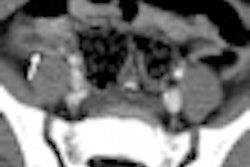There isn't much to like for medical imaging in new Medicare payment rates for 2013. In a November 1 announcement, the U.S. Centers for Medicare and Medicaid Services (CMS) revealed the size of the looming payment cut under the sustainable growth rate (SGR) formula, and also affirmed a raft of other payment cuts that will affect radiology.
CMS confirmed that the agency plans to cut overall physician payment rates by 26.5% due to the requirements of the SGR formula, absent congressional action. Congress has overridden this required reduction every year since 2003, CMS said. If Congress springs into action and the 26.5% cut is avoided, the 2013 rule will increase payments to primary care specialties, while payments to select other specialties -- including radiology -- will decrease.
"Payments to primary care specialties ... will increase due to redistributions from changes in payments for services furnished by other specialties," CMS said in the final rule. "Because of the budget-neutral nature of this system, decreases in payments for one service result in increases in payments in others."
Primary care payments will also increase due to new physician expense relative value units (RVUs) that CMS has developed using the new Physician Practice Information Survey (PPIS) data adopted in the 2010 Medicare Physician Fee Schedule (MPFS) final rule.
Some providers will see decreases in payments as a result of the codes initiative, which some opponents believe incorrectly calculates the value of physician work. Radiation therapy centers will see an overall decrease of 9% due to the PPIS transition and a change in the interest rate assumption used to calculate physician expenses. Radiation oncology providers will see a 7% decrease for the same reasons -- although this is a smaller cut than the 15% CMS proposed in July.
MPPR policy continues
CMS is also reinstating its 2012 MPFS policy to apply the multiple procedure payment reduction (MPPR) of 25% to the professional component (PC) for CT, MR, and ultrasound services provided by one or more physicians in the same group practice who are furnishing services to the same patient, in the same session, on the same day.
For 2013, the MPPR will be applied if other physicians step in and perform subsequent procedures on the same patient in the same session, and CMS is taking the MPPR model to other specialties, such as cardiology and ophthalmology.
"While we agree with commenters that most physicians would not change the way they practice in order to avoid application of the MPPR, we believe application of the imaging MPPR to physicians in the same group practice will ensure that there is no financial incentive for physicians in a group practice to change their behavior to split imaging interpretation services for a beneficiary among different physicians in the group," CMS said.
ACR responds
The imaging cuts proposed in the new rule are potentially dangerous, unfounded, and unnecessary, the American College of Radiology (ACR) said in a statement -- particularly the expansion of the MPPR.
"These cuts primarily affect care for people with immediately life-threatening illnesses or injuries -- those suffering from multiple trauma or heart attacks, stroke patients, and people fighting cancer -- all of whom often need multiple imaging exams to survive," said Dr. Paul Ellenbogen, chair of the ACR's Board of Chancellors, in the statement. "These cuts discourage doctors from working as a team, which is the direction that healthcare is supposed to be going, and pull the rug out from under physicians working to save these people's lives."
It's the arbitrariness of CMS' decisions that's disheartening, according to Cynthia Moran, ACR assistant executive director.
"These final cuts underscore how arbitrary the agency's decisions are," Moran told AuntMinnie.com. "There are no more data to substantiate a 50% [MPPR] cut than there are to support a 25% cut. Where's the consistency? Where's the transparency?"
The rule will be published in the Federal Register on November 16; the final comment period will close on December 31, and the rule will take effect on January 1, 2013.




















